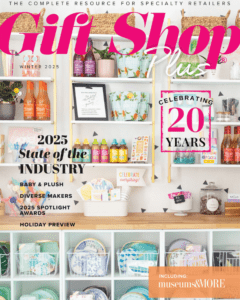Boost Your Holiday Sales
Trends from 2013 point to creativity with promotions, hours to increase foot traffic and business
The holiday season is the biggest time of year for retailers of all shapes and sizes. These sales can account for as much as 20 percent to 40 percent of a retailer’s annual sales. Historically, nearly one-fifth of the industry’s annual sales come directly from the months of November and December, making the holiday season the top consumer-spending event of the year, according to the National Retail Federation.
NRF forecast in July that retail sales would grow 3.6 percent in 2014 over 2013. NRF had lowered its retail sales forecast for 2014 in July because of slow growth recorded during the first half of the year but said sales are expected to grow significantly faster in the second half of the year.
In the NRF report titled “In retail, it’s never too early to prepare for the holidays,” author Allison Zeller laid out the facts of the last holiday season and how retailers can learn from the statistics.
2013 was no easy street for retail — and it didn’t help that many of the status reports and rumors didn’t reflect what was really happening in the industry, Zeller said. “We’ve taken a look back at what we heard in the media and elsewhere and compared it with research data collected during and after the season. The differences might surprise you,” she added.
For example, consider the predictions that spending would be down significantly during the holidays due to the government shutdown, harsh winter weather and fewer days between Thanksgiving and Christmas. When consumer-spending reports were released after the holidays, spending was up from the previous year. What’s more surprising is that spending was consistently up throughout the season — not just in December.
Preparing for the Season
What does that mean for retailers as they begin to prepare for the next holiday season? Sales continue to be the driving motivators for consumers to spend, and they’re spreading their shopping across a longer period of time, according to the report. This year retailers can use this to their advantage by considering extending promotions and store hours outside of the traditional November-December timeline.
Black Friday has long been associated with frantic crowds, early-bird deals and quick purchase decisions before hot products disappear. In 2013, many speculated that consumers wouldn’t show up on both Thanksgiving Day and through the holiday weekend. There was also scrutiny over an increased number of retailers opening on Thanksgiving Day.
Several retailers made the call in 2013 to open stores on this day as a direct result of customer demand. According to NRF’s Thanksgiving weekend survey released Sunday of that weekend, 141.1 million consumers went shopping or were planning to shop before the weekend ended, which was up from 139.4 million in 2012 — and way up from five years prior (110 million). Rather than just the biggest shopping day of the year, retailers had one of the biggest shopping weekends ever.
In addition to the larger crowds on Black Friday, retailers predicted Thanksgiving Day would be another big day for consumers. Thursday is quickly growing to be one of the most popular days to shop during the holiday weekend. In 2013, 31.8 percent shopped on Thanksgiving Day, up from 14.7 percent who shopped that day five years ago. Black Friday, however, has not lost its luster and continues to be the biggest shopping day of the year.
But not all age groups showed up in large numbers. Of those shopping Thanksgiving weekend, adult Millennials (those born between 1981 and 1995) showed the most interest in snapping up deals: 50.6 percent of Millennial shoppers had shopped Thanksgiving Day, compared to 36.3 percent of Gen-Xers (those born between 1965 and 1980), 20.2% of Boomers and 8.1 percent of Silents (those born before 1946). GS
For more insights from the NRF that can be used to help guide 2014 plans, visit NRF and the Retail Insight Center, www.nrf.com and http://research.nrffoundation.com, to find more trends from the holiday shopping season.
Pre-Season Planning
NRF offers several suggestions on how retailers can use the 2013 holiday shopping statistics to stay one step ahead in 2014:
• Be creative with promotions and holiday hours. Consumers are spreading out their holiday shopping and being savvier about finding deals. Retailers can use this to their advantage by offering promotions throughout the season and extending their store hours to meet their customers’ demands.
• Retailers should be prepared for consumers to be shopping for the holidays both earlier and later. Be ready to meet their needs right up until Christmas Eve.
• When hiring seasonal help, think beyond the store if you also sell online. Consumers are likely to hit the Web before, during or after hitting the stores, and retailers must be prepared with added resources to meet the demands in their stores, distribution centers and customer service areas.
• Thanksgiving Day is big, but it might not be for everyone. With Millennials driving the trend to shop on Thanksgiving Day, it’s only expected to grow in popularity. Opening on the holiday, however, is a commitment you need to evaluate carefully. Retailers need to thoroughly evaluate their customers’ preferences before taking that plunge.











